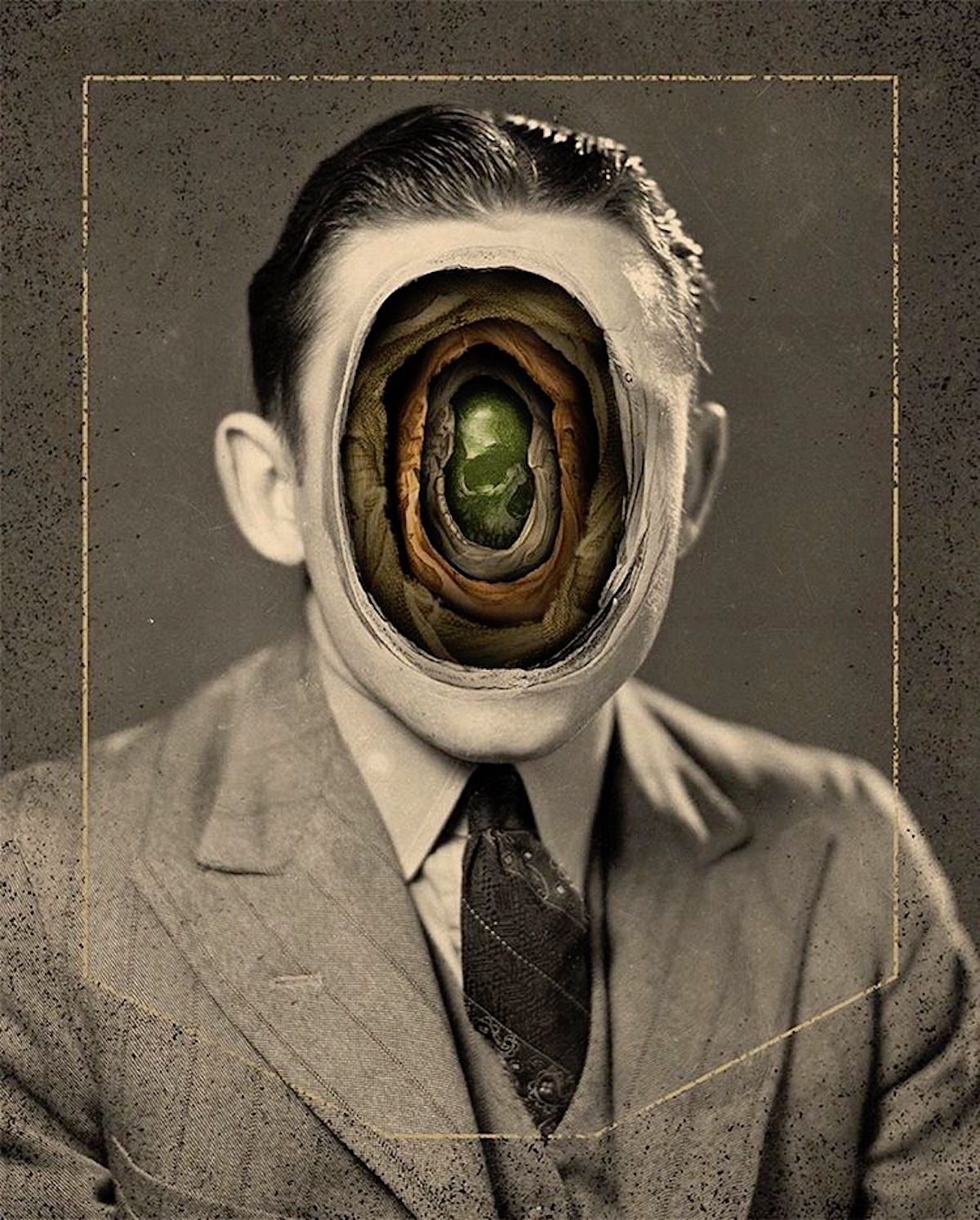
The clues maybe visible, but the answers are often wrong. I once had a friend who was funny and smart and kind. He made the effort to make a smile and give support. He seemed to have boundless energy and ideas. “My heid’s buzzin’,” he’d joke. He never refused to give of his time or to stop and listen. Then one day, after making everyone smile and laugh and feel good about themselves, he went home and killed himself. The clues were there but most of us hadn’t been paying attention.
To paraphrase David Foster Wallace, another bloke who killed himself: we have to keep an “awareness of what is so real and essential, so hidden in plain sight all around us, that we have to keep reminding ourselves, over and over–” this is life, this is life.
But we forget. I suppose to keep that focussed would drive us mad. Instead we walk around with our problems and fears and a deepening sense of failure, trying to carry on as if nothing much is wrong. That’s what I think about when I look at Alex Eckman-Lawn’s artwork. It reminds me of those pictures of maimed First World War soldiers who returned from the Front with their faces scarred with wounds revealing the hidden substance underneath. Instead of bone and tissue, Eckman-Lawn’s disfigured faces show cats, flowers, skulls, and often unnameable horrors.
But that’s only my interpretation, which (of course) reflects my own hang-ups and part-time obsessions.
Eckman-Lawn taught himself to draw by copying the comic book pictures from the pages of one of those How to Draw Marvel Superheroes books, which his old man photocopied at the local library. He was good, he was smart, he had an obvious talent.
Born in Philadelphia, Eckman-Lawn was raised in a very religious household. His parents had met when at a seminary. He attended a Quaker school but “that shit bugged [him] out because [he] thought it was so creepy—people all chanting and stuff together is fucking weird—and also powerful in a way.”
So a lot of my work is trying to get that feeling—that weird mysterious feeling, like you’re almost scared and intimidated. It’s something bigger than just sitting there in a room with people, but also sort of fun.
After graduating from the University of the Arts in Philadelphia, Eckman-Lawn became known for his comic books like the Eisner Award winning Little Nemo: Dream Another Dream, Awakening volumes one and two, and Mouse Guard: Legends of the Guard, among many others. He also supplied designs for album covers by bands as diverse as Psyopus, Architect, Yakuza, Maruta, Krieg, Nero Di Marte, Hacride, Nesseria and many more. And running concurrently with all of this was his strange and disturbing collage artworks.
Eckman-Lawn describes himself as “a scumbag illustrator who lives in the gutters of Philadelphia. He spends his days making comics and album artwork, and his nights stealing blood from local hospitals.” He says his collages are about “ownership and control, organizing the chaos and uncertainty of my life into orderly prisms.” His work tends to deal with the fear of his own body, which he describes as “the feeling of being trapped in a decaying cage.”
These images are multi-layered, culled from old photographs and the pages of old medical books. He dissects his paper sculptures like the opening up a cadaver—sometimes sticking the old blade in “violently.”
I burrow into the body, creating caverns and uncovering new spaces. The result can be harrowing, but at times comforting as well. In cutting through the layers of paper, I am given the opportunity to play both surgeon and architect, for once in complete control over what lies inside.
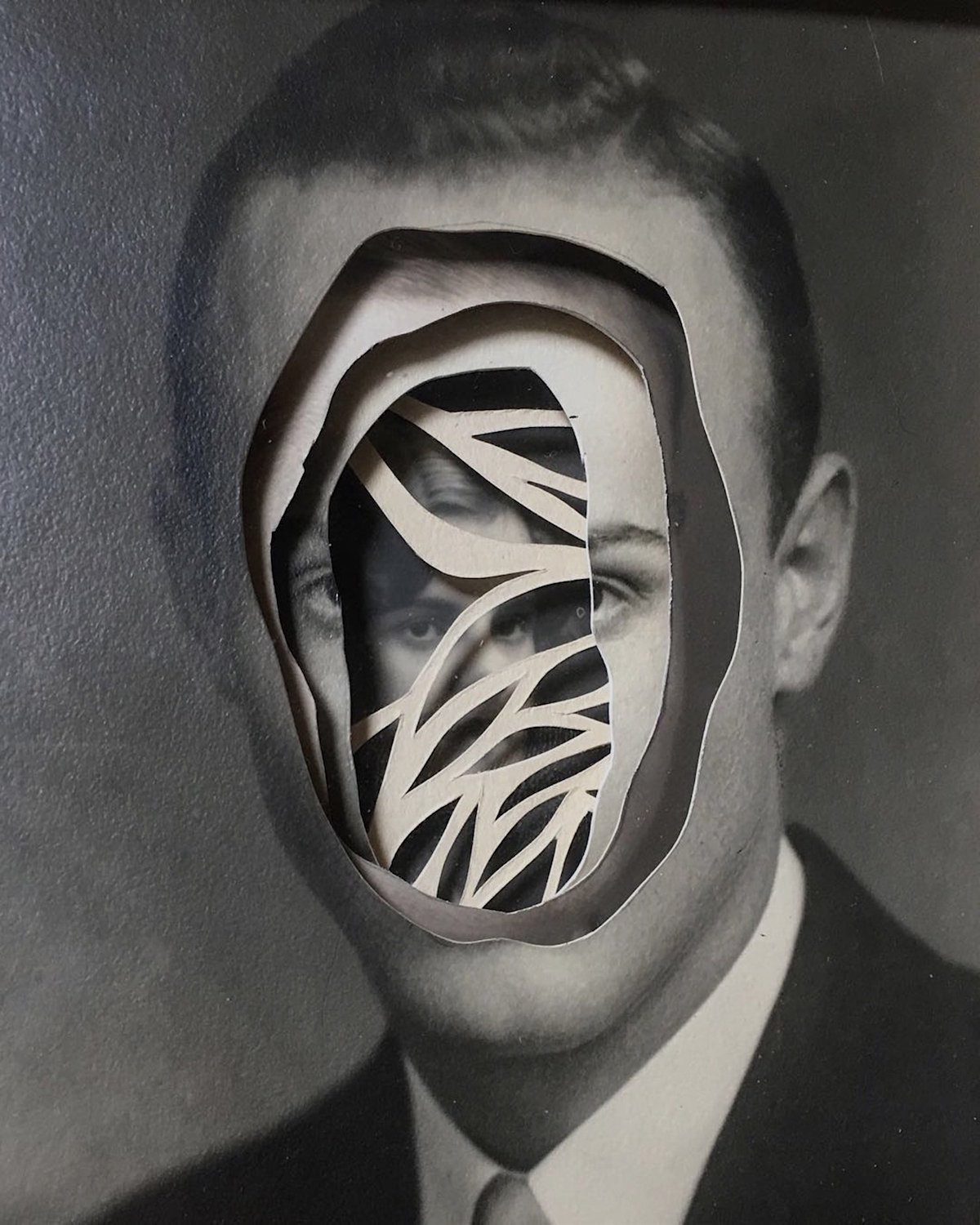

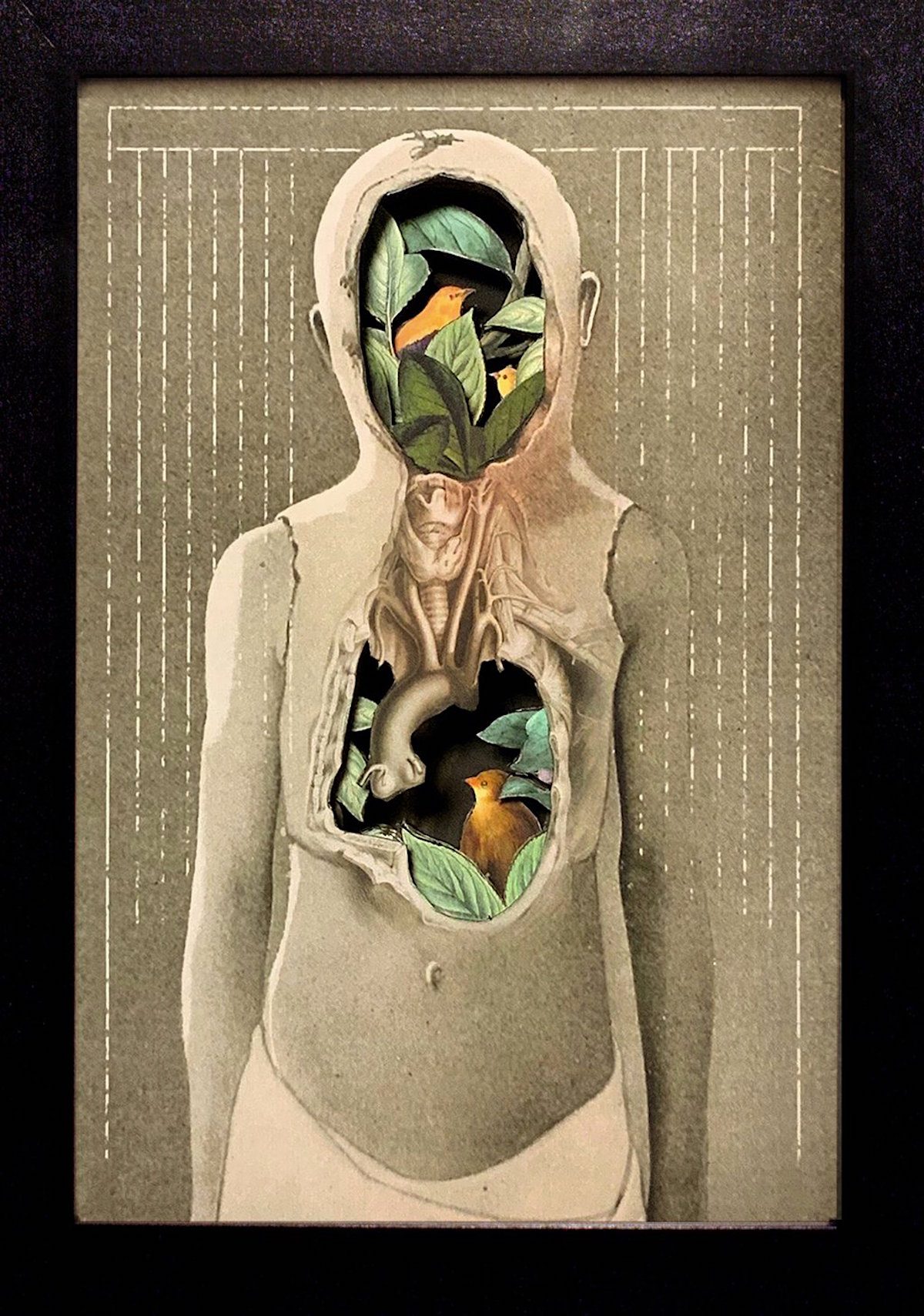
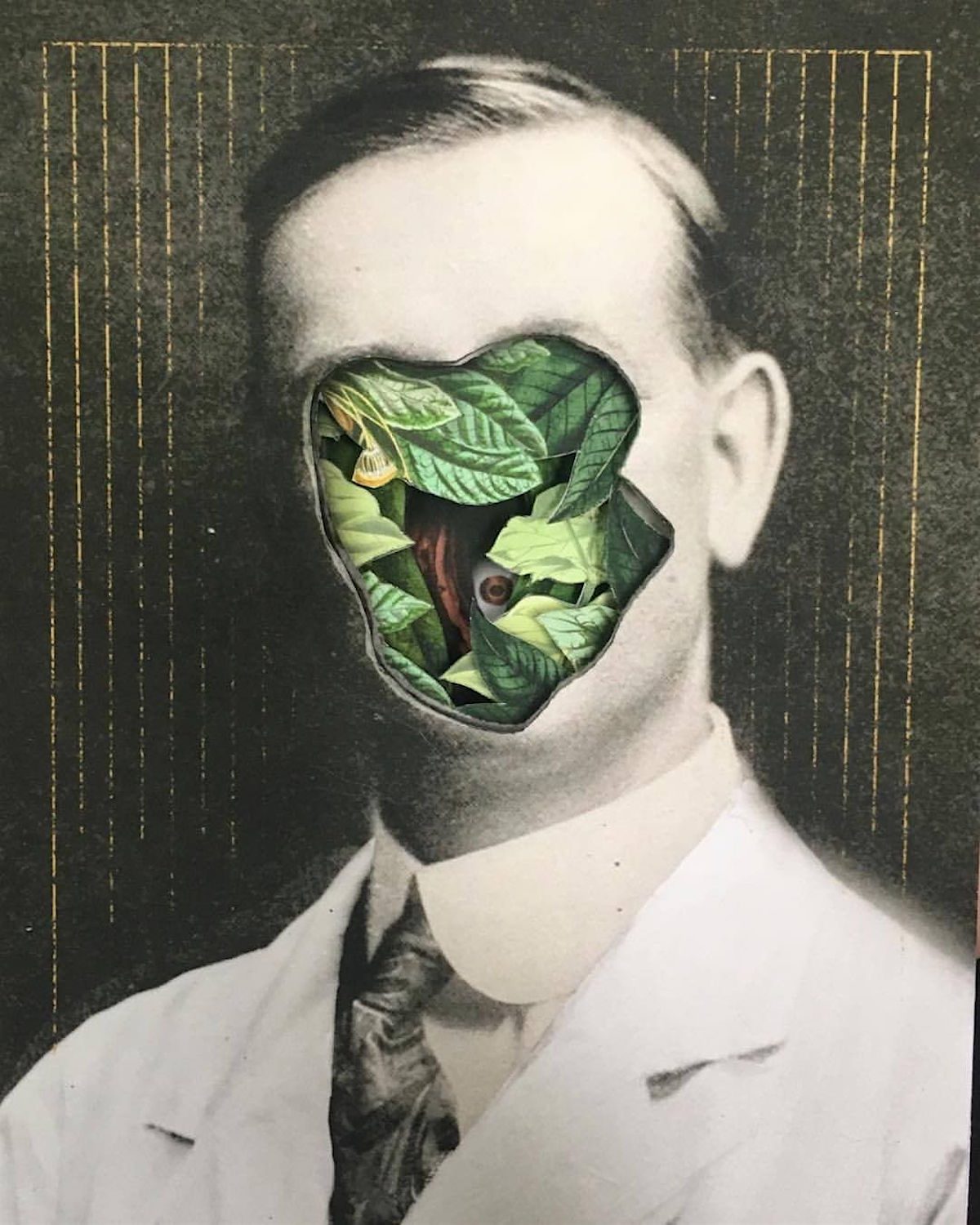
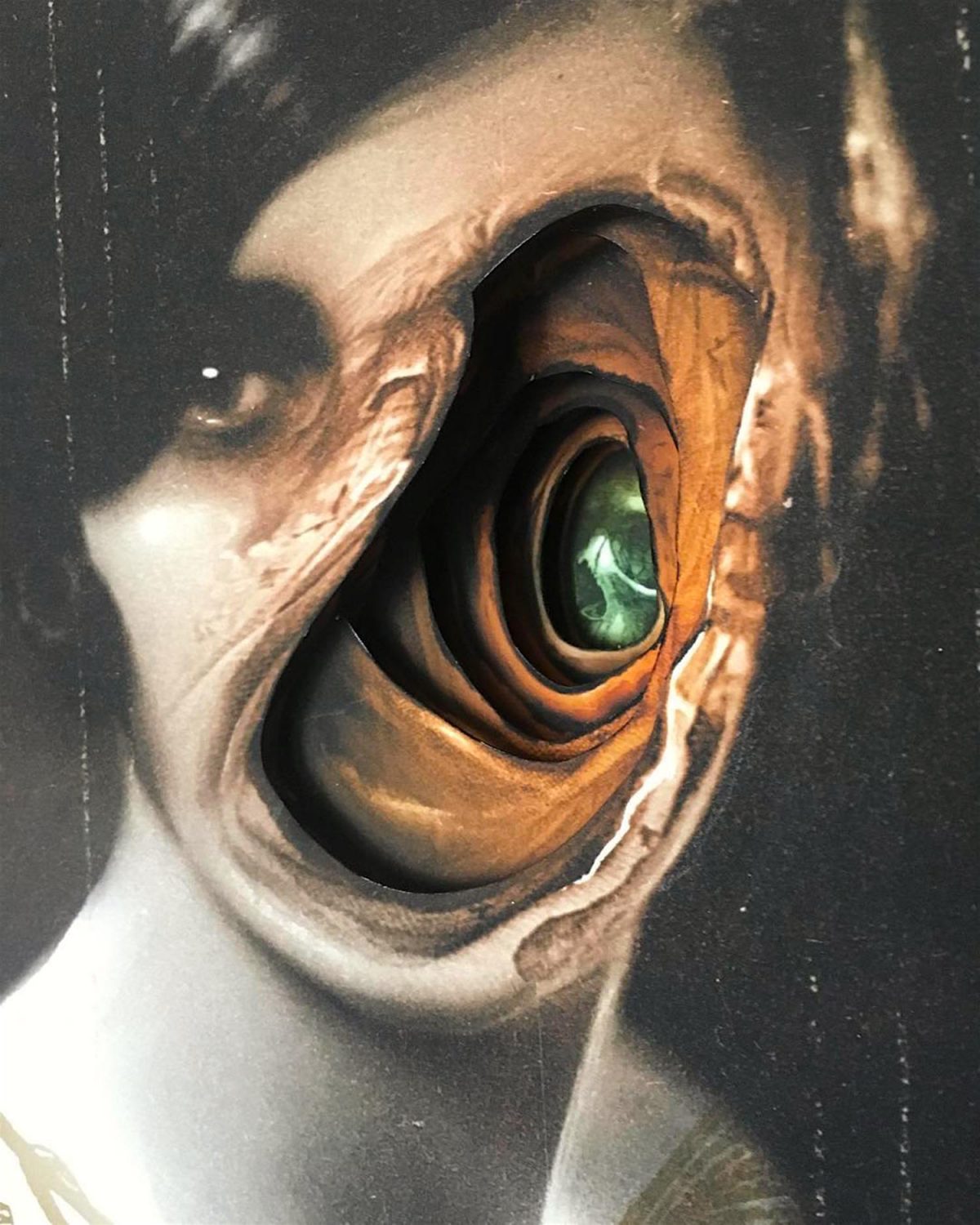
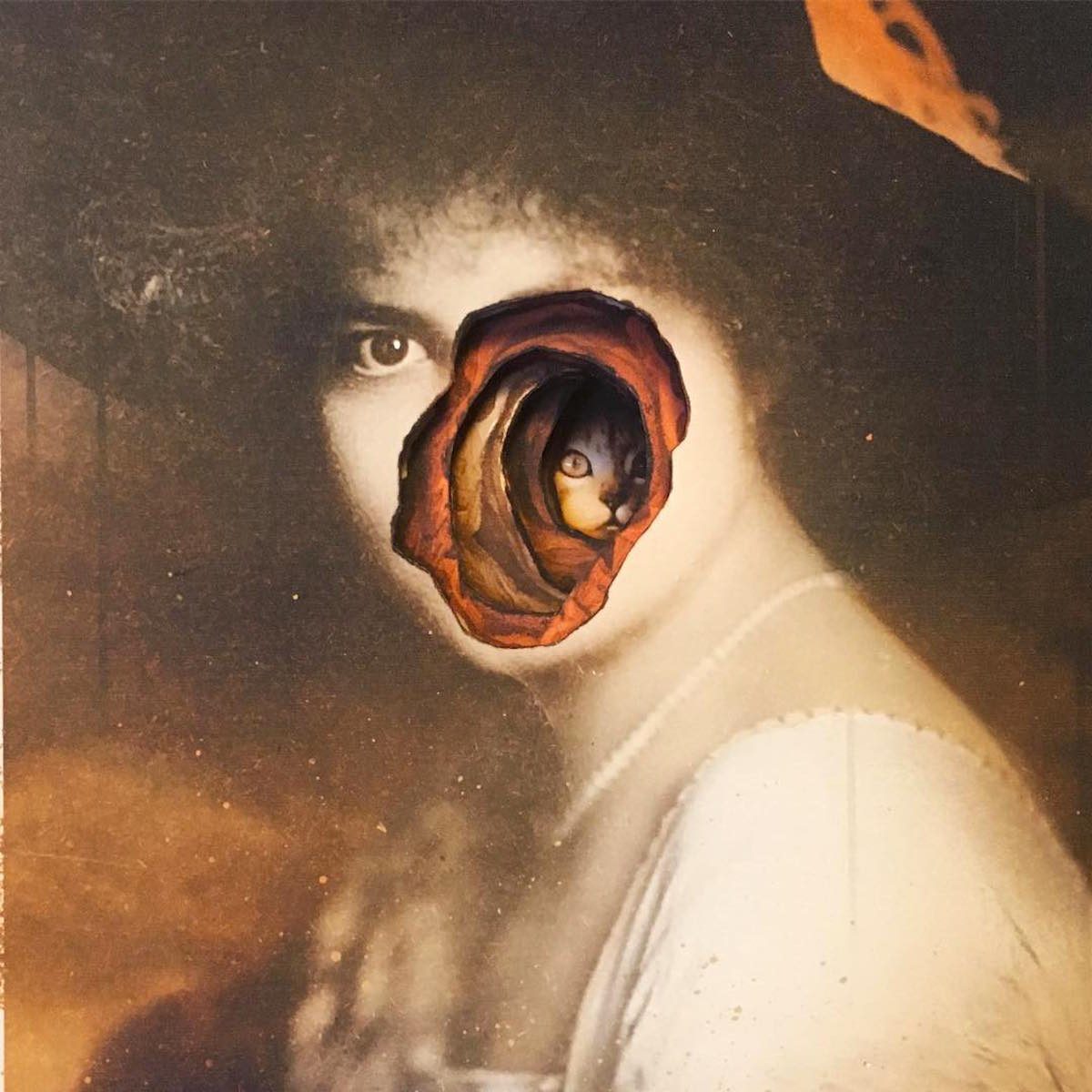
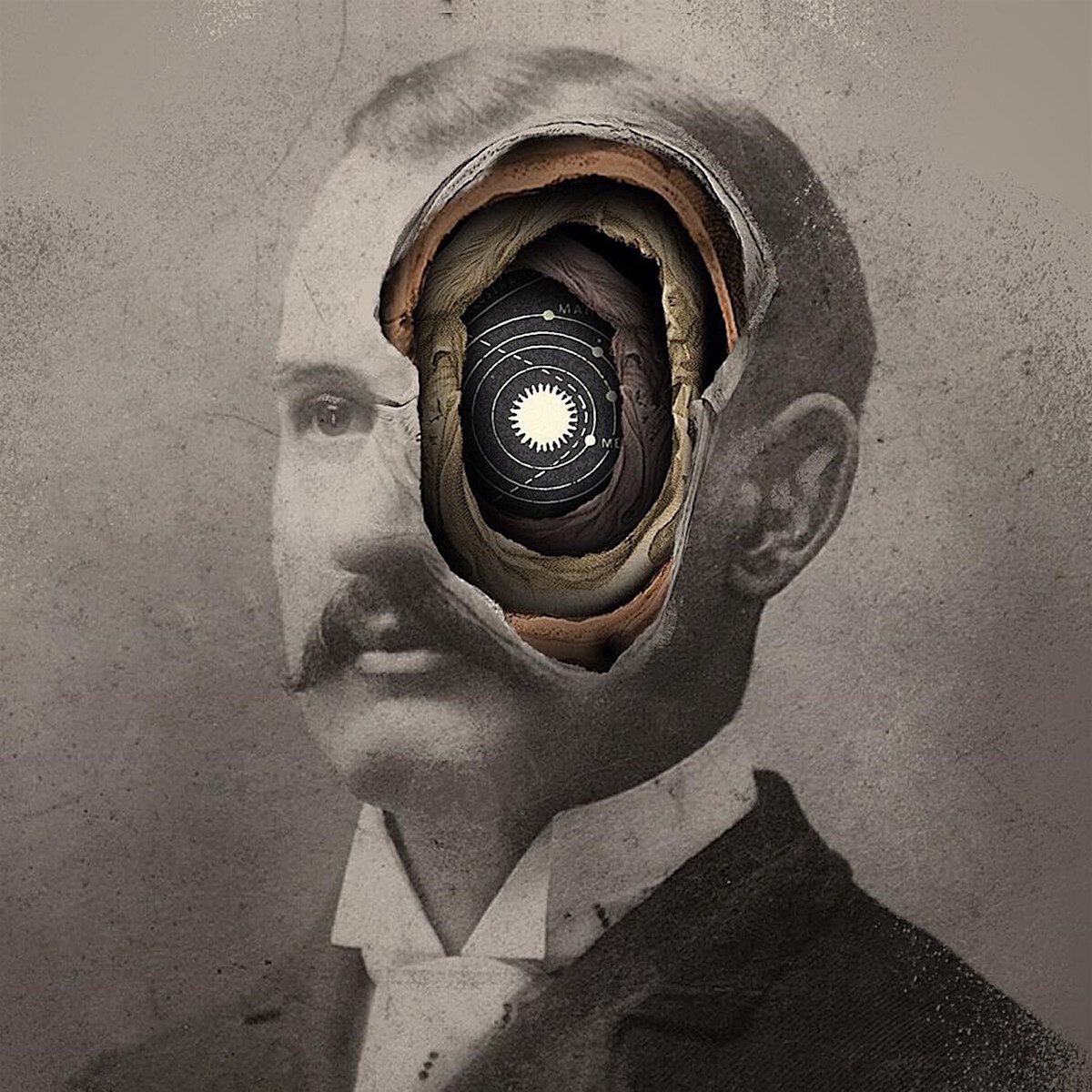
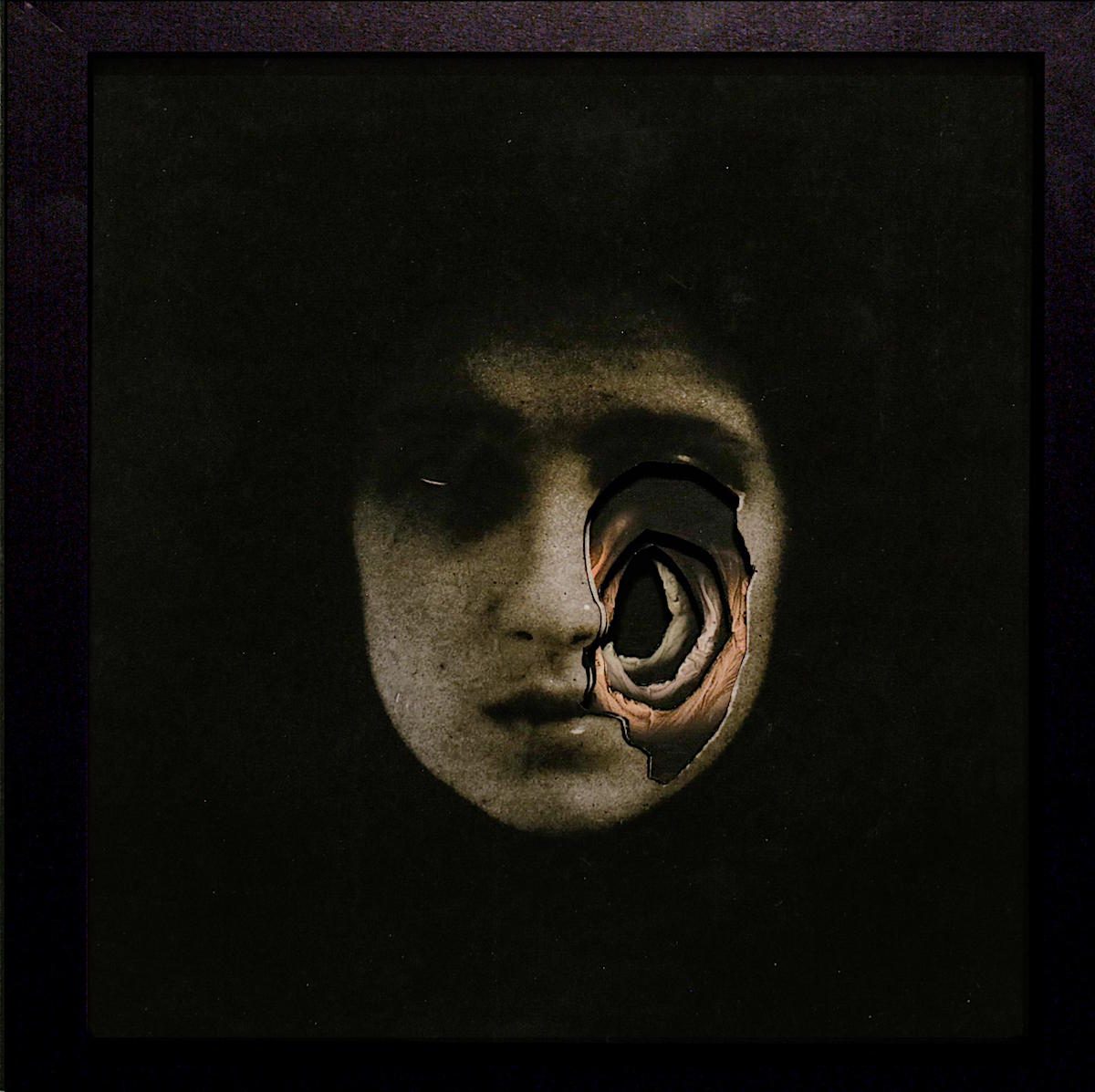
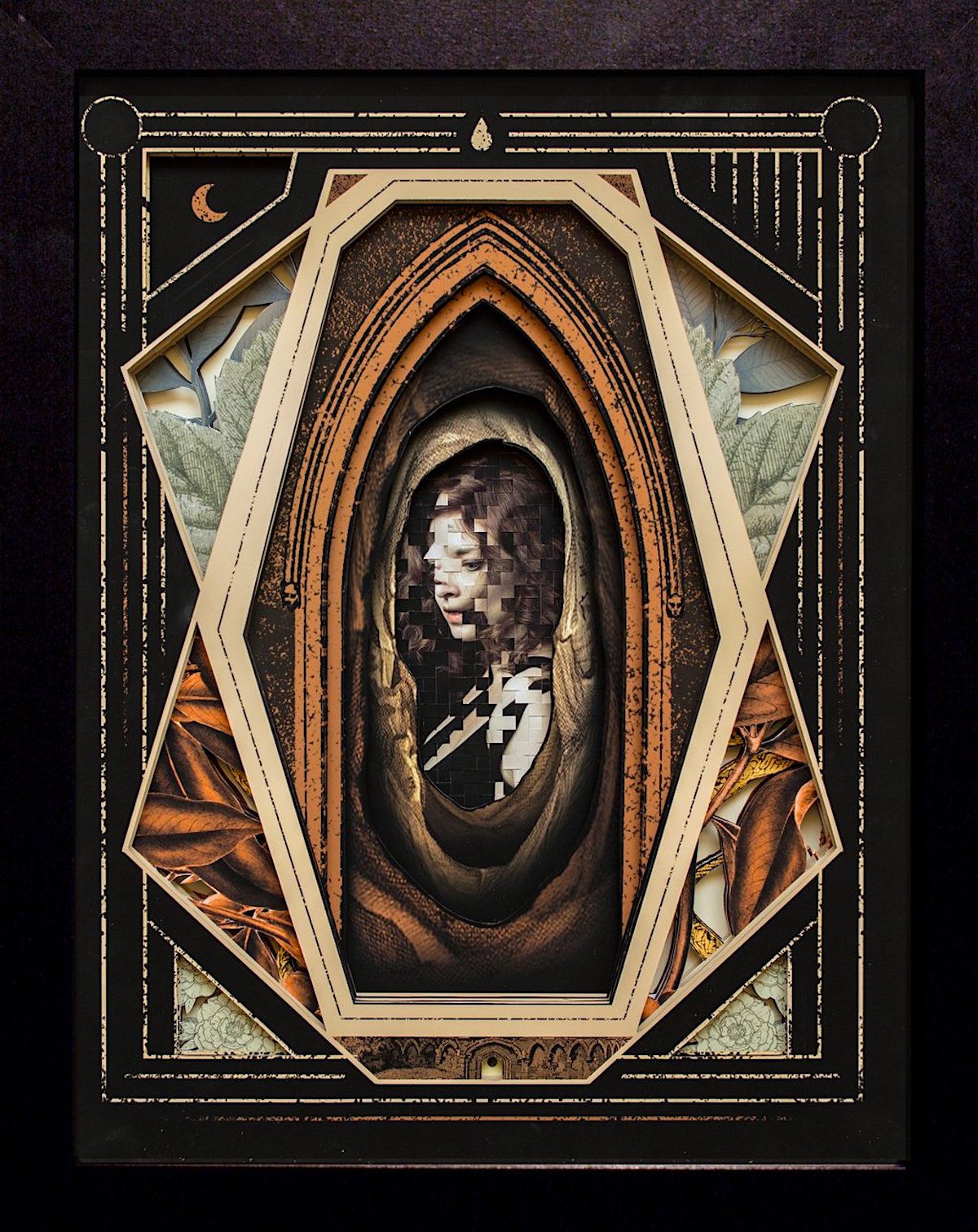
H/T Haute Macabre.
Would you like to support Flashbak?
Please consider making a donation to our site. We don't want to rely on ads to bring you the best of visual culture. You can also support us by signing up to our Mailing List. And you can also follow us on Facebook, Instagram and Twitter. For great art and culture delivered to your door, visit our shop.








